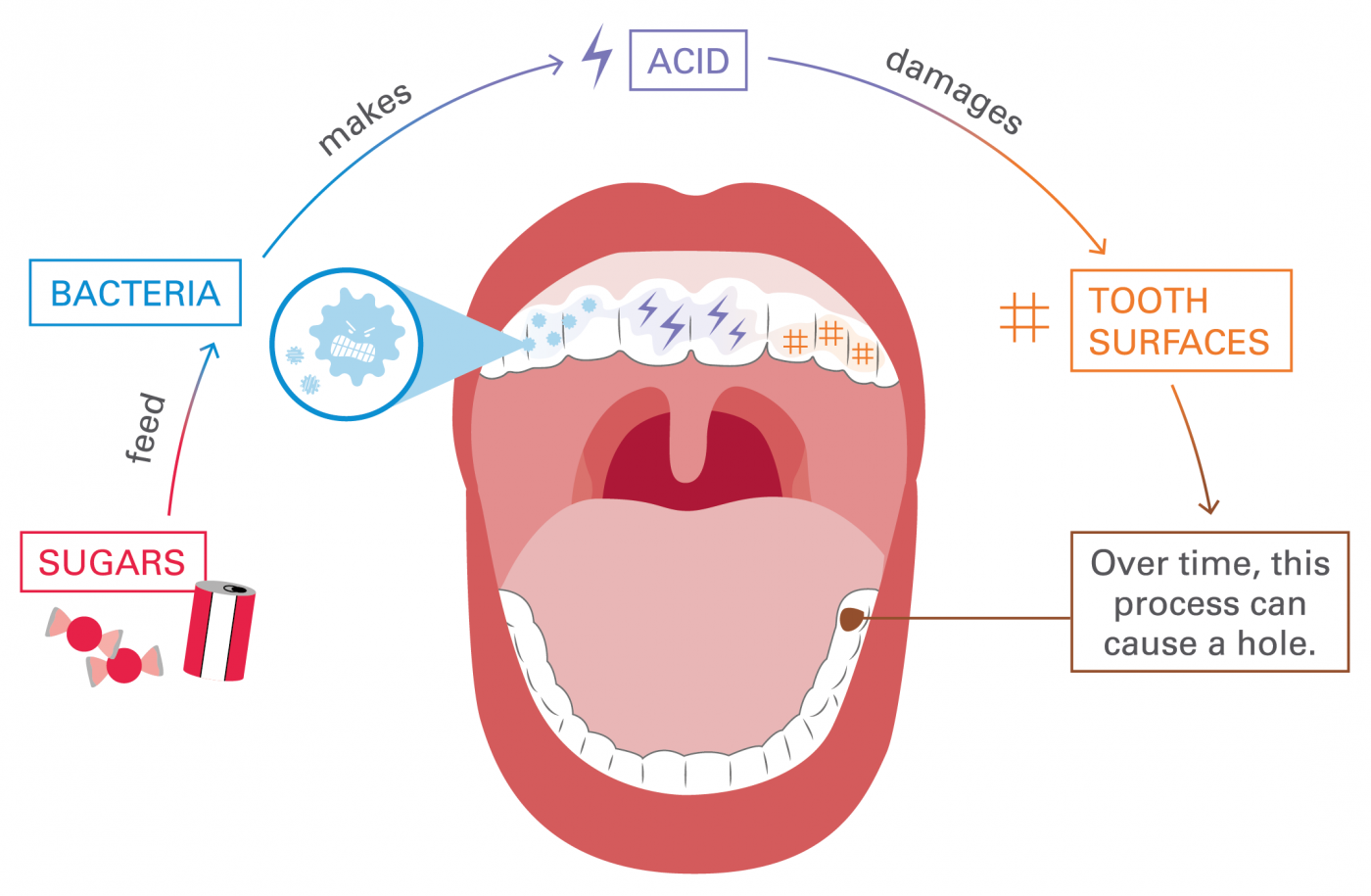What is it?
A process of damage to tooth surface(s) over time which can eventually result ina cavity (hole) in the tooth.
How does it happen?
Everybody has lots of different bacteria (‘germs’) in their mouth. Most don’t do any harm, but when given the right conditions, some can cause tooth decay.
These bacteria turn sugars from food and drinks into acid, which damages the enamel (tooth surface).
Minerals in saliva and fluoride (found in toothpaste and most of Victoria’s public drinking water) help to repair damage to the tooth surface.
But over time, if there is more damage than repair, a hole forms.

As well as sugar, acid found in foods and drinks (eg fizzy drinks and ‘sports’ drinks) can also damage the tooth surface and contribute to tooth decay.
What can you do?
If you support someone to care for their mouth:
| Look for the signs of tooth decay | Reduce risk by providing support to |
|---|---|
|
|
If you need a snack, try to choose a tooth-friendly one
Sugary or highly processed snacks are most likely to contribute to tooth decay. Cheese, plain yoghurt, vegetables, fruit, nuts and seeds are good options for teeth and more likely to fill you up.